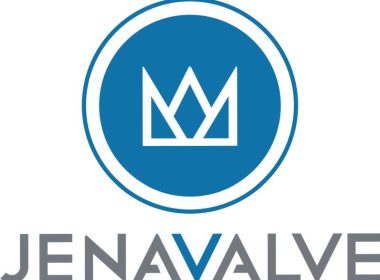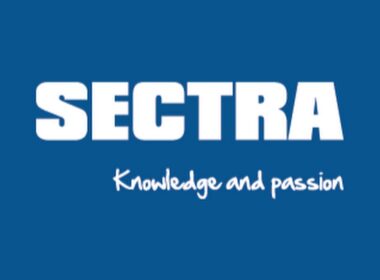Late-Breaking Data Presented at Society of Vascular and Interventional Neurology Annual Meeting Demonstrated Excellent Reperfusion and Rapid Procedure Times with the Zoom Stroke System Using Large-Bore Intracranial Access, Asymmetric Aspiration, and Continuous Dual Aspiration CAMPBELL, Calif.–(BUSINESS WIRE)–Imperative Care, Inc. today announced the presentation of late-breaking, real-world data from a multi-center review […]
Author: Ken Dropiewski
Validation study for EchoSolv HF completed at the Mayo Clinic – Study delivers exceptional results
SYDNEY, Nov. 24, 2025 (GLOBE NEWSWIRE) — AI and Medical Technology Company Echo IQ Limited (ASX: EIQ) (“Echo IQ” or “the Company”) is pleased to advise that it has completed its clinical validation for its heart failure clinical decision support software (“EchoSolv HF”) in collaboration with the Mayo Clinic Platform (“MCP”), a division of the Mayo Clinic, a top ranked US hospital. The MCP Validate program is a unique in-market AI evaluation program which generates an independent and objective report on accuracy, efficacy and susceptibility to bias for AI-based decision software (refer ASX Announcement 1 July 2025).
JenaValve Announces New, Late-Breaking Results from the ALIGN-AR Trial Published in The Lancet and Presented at PCR London Valves
IRVINE, Calif., Nov. 24, 2025 (GLOBE NEWSWIRE) — JenaValve Technology, Inc., developer and manufacturer of the Trilogy™ Transcatheter Heart Valve (THV) System, today announced results from an expanded cohort of 700 patients from the ALIGN-AR pivotal trial for the Trilogy THV System in high-risk patients with symptomatic, severe aortic regurgitation (AR). These results were published in The Lancet and simultaneously presented as part of the Late-Breaking Clinical Trial sessions at PCR London Valves.
BioCardia Strengthens Leadership Team with The Addition of Farhan Shahab as Vice President of Quality
SUNNYVALE, Calif., Nov. 24, 2025 (GLOBE NEWSWIRE) — BioCardia, Inc. [NASDAQ: BCDA], a global leader in cellular and cell-derived therapeutics for the treatment of cardiovascular and pulmonary diseases, today announces the appointment of Farhan Shahab as Vice President of Quality. Mr. Shahab brings over 25 years of experience to BioCardia in similar executive roles. Mr. Shahab joins BioCardia from Welldoc (a digital health company focused on chronic disease management), where he served as Vice President of Quality and Regulatory. Prior to that, he served as Senior Director of Regulatory Affairs and Quality Assurance at Intuity Medical (a blood glucose monitoring device company), and as Director of Quality Assurance and Regulatory Compliance at Moximed, (an orthopedic device company), and as Senior Director, Quality Engineering at AngioScore (a catheter manufacturer). Before that, he served as Manager, Quality Engineering and Quality Systems at Medtronic, supporting the integration of two major acquisitions. Mr. Shahab earned his BS in Chemical Engineering at the University of Massachusetts and his MBA from the University of Phoenix. He is also a Regulatory Affairs Certified (RAC) professional and Certified Auditor (Exemplar Global), dedicated to ensuring quality systems compliance and strategic regulatory alignment. “Farhan’s expertise in product quality management and supporting regulatory submissions across a number of product categories will be invaluable for our team.” commented Peter Altman, PhD, CEO of BioCardia. “We are delighted to welcome Farhan. His past proven leadership and extensive relevant experience have potential to accelerate our ability to commercialize our investigational products.” About BioCardia® BioCardia, Inc., headquartered in Sunnyvale, California, is a global leader in cellular and cell-derived therapeutics for the treatment of cardiovascular and pulmonary disease. CardiAMP® autologous and CardiALLO™ allogeneic cell therapies are the Company’s biotherapeutic platforms with three clinical stage product candidates in development. These therapies are enabled by its Helix™ biotherapeutic delivery and Morph® vascular navigation product platforms. For more information visit: https://www.BioCardia.com. Forward Looking Statements This press release contains forward-looking statements that are subject to many risks and uncertainties. Forward-looking statements include, among other things, references to our investigational product candidates, the potential benefits and mechanism of actions of our therapies, future regulatory approvals, and the safety and efficacy of our product candidates and therapies. These forward-looking statements are made as of the date of this press release, and BioCardia assumes no obligation to update the forward-looking statements. We may use terms such as “believes,” “estimates,” “anticipates,” “expects,” “plans,” “intends,” “may,” “could,” “might,” “will,” “should,” “approximately” or other words that convey the uncertainty of future events or outcomes to identify these forward-looking statements. Although we believe that we have a reasonable basis for each forward-looking statement contained herein, we caution you that forward-looking statements are not guarantees of future performance and that our actual results may differ materially from the forward-looking statements contained in this press release. As a result of these factors, we cannot assure you that the forward-looking statements in this press release will prove to be accurate. Additional factors that could materially affect actual results can be found in BioCardia’s Form 10-K filed with the Securities and Exchange Commission on March 26, 2025, under the caption titled “Risk Factors,” and in our subsequently filed Quarterly Reports on Form 10-Q. BioCardia expressly disclaims any intent or obligation to update these forward-looking statements, except as required by law. CONTACT: Media Contact:
Miranda Peto, Investor Relations
Email: mpeto@BioCardia.com
Phone: 650-226-0120
Investor Contact:
David McClung, Chief Financial Officer
Email: investors@BioCardia.com
Phone: 650-226-0120
Profusa to Present Late Breaking U.S.-Based Clinical Trial Update at Paris Vascular Insights 2025
Study evaluates Lumee™ Oxygen tissue monitoring platform with transcutaneous partial pressure of oxygen (tcpO₂) in peripheral artery disease patients
Landmark CREST-2 Study Published in the New England Journal of Medicine Highlights the Benefits of Carotid Artery Stenting
Carotid artery stenting combined with medical therapy demonstrated a significantly lower stroke risk compared to intensive medical therapy alone in patients with severe asymptomatic carotid stenosis Carotid artery stenting combined with medical therapy demonstrated a significantly lower stroke risk compared to intensive medical therapy alone in patients with severe asymptomatic carotid stenosis
Sectra at RSNA 2025: Supporting subspecialty workflows and photon-counting CT at the workstation to reduce burnout risk and improve patient care
LINKÖPING, Sweden, Nov. 24, 2025 /PRNewswire/ — At this year’s Radiological Society of North America’s annual meeting (RSNA), international medical imaging IT and cybersecurity company Sectra (STO: SECT B) will present new developments designed to make radiology workflows even more…
Conavi Medical Corp. Announces Proposed Public Offering of Common Shares and Pre-Funded Warrants
PRELIMINARY PROSPECTUS ACCESSIBLE ON SEDAR+ NOT FOR RELEASE OR DISTRIBUTION IN THE UNITED STATES OR FOR DISSEMINATION TO U.S. NEWS WIRE SERVICES TORONTO, Nov. 21, 2025 (GLOBE NEWSWIRE) — Conavi Medical Corp. (TSXV: CNVI) (“Conavi Medical” or the “Company”), a commercial stage medical device company focused on designing, manufacturing, and marketing imaging technologies to guide common minimally invasive cardiovascular procedures, announced today that it has filed a preliminary short form prospectus (the “Preliminary Prospectus”) with the securities regulatory authorities in the Provinces of British Columbia, Alberta and Ontario in connection with an offering (the “Offering”) of common shares of the Company (“Common Shares”) and/or pre-funded common share purchase warrants of the Company (“Pre-Funded Warrants” and, together with the Common Shares, the “Securities”) in lieu of Common Shares. The Offering is expected to be completed on a commercially reasonable efforts agency basis pursuant to an agency agreement to be entered into between the Company and Bloom Burton Securities Inc. (“Bloom Burton” or the “Agent”). The number of Securities to be distributed, the size of the Offering and the price of each Common Share and Pre-Funded Warrant will be determined by negotiation between the Company and Bloom Burton in the context of the market with final terms to be determined at the time of pricing. The Company intends to use the net proceeds from the Offering to obtain US FDA 510(k) clearance of the next generation Novasight Hybrid system, as well as complete a limited market release and initiate a broader commercial launch in the United States. The Company also intends to use the net proceeds for working capital and other general corporate purposes. The Offering is expected to close on or about December 12, 2025 (the “Closing Date”) or such later date as may be agreed upon by the Company and Bloom Burton. The Offering is subject to the Company and the Agent entering into a definitive agency agreement, and subject to satisfaction of customary closing conditions, including the receipt of all necessary regulatory and stock exchange approvals, including approval of the TSX Venture Exchange (“TSXV”). In addition, the Securities are anticipated to be offered by way of private placement in certain jurisdictions outside of Canada pursuant to and in compliance with applicable securities laws. For further details with respect to the Offering, please see the Preliminary Prospectus, a copy of which is available on SEDAR+ at www.sedarplus.ca. This press release is not an offer to sell or the solicitation of an offer to buy the Securities in any jurisdiction in which such offer, solicitation or sale would be unlawful prior to qualification or registration under the securities laws of such jurisdiction. The Securities being offered have not been, nor will they be, registered under the United States Securities Act of 1933, as amended (the “U.S. Securities Act”), and such securities may not be offered or sold to, or for the account or benefit of, persons in the United States or U.S. persons absent registration or an applicable exemption from U.S. registration requirements. “United States” and “U.S. persons” have the meanings ascribed to them in Regulation S under the U.S. Securities Act. Access to the Preliminary Prospectus and any amendments to such document will be provided in accordance with securities legislation relating to procedures for providing access to a short form prospectus and any amendment thereto. The Preliminary Prospectus is accessible on SEDAR+ at www.sedarplus.ca. Alternatively, an electronic or paper copy of the Preliminary Prospectus and any amendment to such document may be obtained without charge, from the Agent by email at ECM@bloomburton.com, by telephone at 416-640-7585 or by providing the contact with an email address or address, as applicable. The Preliminary Prospectus contains important, detailed information about the Company and the Offering. Prospective investors should read the Preliminary Prospectus before making an investment decision. About Conavi Medical Conavi Medical is focused on designing, manufacturing, and marketing imaging technologies to guide common minimally invasive cardiovascular procedures. Its patented Novasight Hybrid™ System is the first to combine intravascular ultrasound (IVUS) and optical coherence tomography (OCT) into a single device, enabling simultaneous and co-registered imaging of coronary arteries. The first-generation Novasight Hybrid™ System has regulatory clearance in the U.S., Canada, China, and Japan. For more information, visit conavi.com. CONTACT: Christina CameronIR@conavi.com Notice on forward-looking statements: This press release includes forward-looking information or forward-looking statements within the meaning of applicable securities laws regarding the Company and its business, which may include, but are not limited to, statements with respect to the anticipated terms and jurisdictions of the Offering; securities offered thereunder; the timing of the Offering, including the anticipated Closing Date; use of proceeds from the Offering; regulatory and exchange approvals, including the listing of the Common Shares offered pursuant to the Offering on the TSXV. All statements that are, or information which is, not historical facts, including without limitation, statements regarding future estimates, plans, programs, forecasts, projections, objectives, assumptions, expectations or beliefs of future performance, are “forward-looking information or statements”. Often but not always, forward-looking information or statements can be identified by the use of words such as “shall”, “intends”, “anticipate”, “believe”, “plan”, “expect”, “intend”, “estimate”, “anticipate” or any variations (including negative variations) of such words and phrases, or state that certain actions, events or results “may”, “might”, “can”, “could”, “would” or “will” be taken, occur, lead to, result in, or, be achieved. Such statements are based on the current expectations and views of future events of the management of the Company. They are based on assumptions and subject to risks and uncertainties. Although management believes that the assumptions underlying these statements are reasonable, they may prove to be incorrect. The forward-looking events and circumstances discussed in this release, may not occur and could differ materially as a result of known and unknown risk factors and uncertainties affecting the Company, including, without limitation, those listed in the “Risk Factors” section of the Preliminary Prospectus and the “Risk Factors” sections of the joint information circular of the Company dated August 30, 2024 (both of which are on the Company’s profile at www.sedarplus.ca). Although the Company has attempted to identify important factors that could cause actual actions, events or results to differ materially from those described in forward-looking statements, there may be other factors that cause actions, events or results to differ from those anticipated, estimated or intended. Accordingly, readers should not place undue reliance on any forward-looking statements or information. No forward-looking statement can be guaranteed. Except as required by applicable securities laws, forward-looking statements speak only as of the date on which they are made and the Company does not undertake any obligation to publicly update or revise any forward-looking statement, whether as a result of new information, future events, or otherwise. No regulatory authority has approved or disapproved the content of this press release. Neither the TSX Venture Exchange nor its Regulatory Services Provider (as that term is defined in the policies of the TSX Venture Exchange) accepts responsibility for the adequacy or accuracy of this press release. 535335320v.6
GE HealthCare to acquire Intelerad, advancing cloud-enabled enterprise imaging across care settings
Creates a fully-connected, cloud-first imaging ecosystem spanning high-growth outpatient and ambulatory, teleradiology and hospital settings Brings AI and workflow orchestration, cloud PACS, and image sharing, all in a SaaS business model, to GE HealthCare Offers attractive return profile given high growth, recurring revenue base and strong margin profile of Intelerad, […]
Delcath Systems Board of Directors Authorizes $25 Million Share Repurchase Program
QUEENSBURY, N.Y.–(BUSINESS WIRE)–Delcath Systems, Inc. (Nasdaq: DCTH), (“Delcath”) an interventional oncology company focused on the treatment of primary and metastatic cancers to the liver, today announced that its Board of Directors has authorized a share repurchase program under which Delcath may repurchase up to $25 million of its outstanding shares […]













